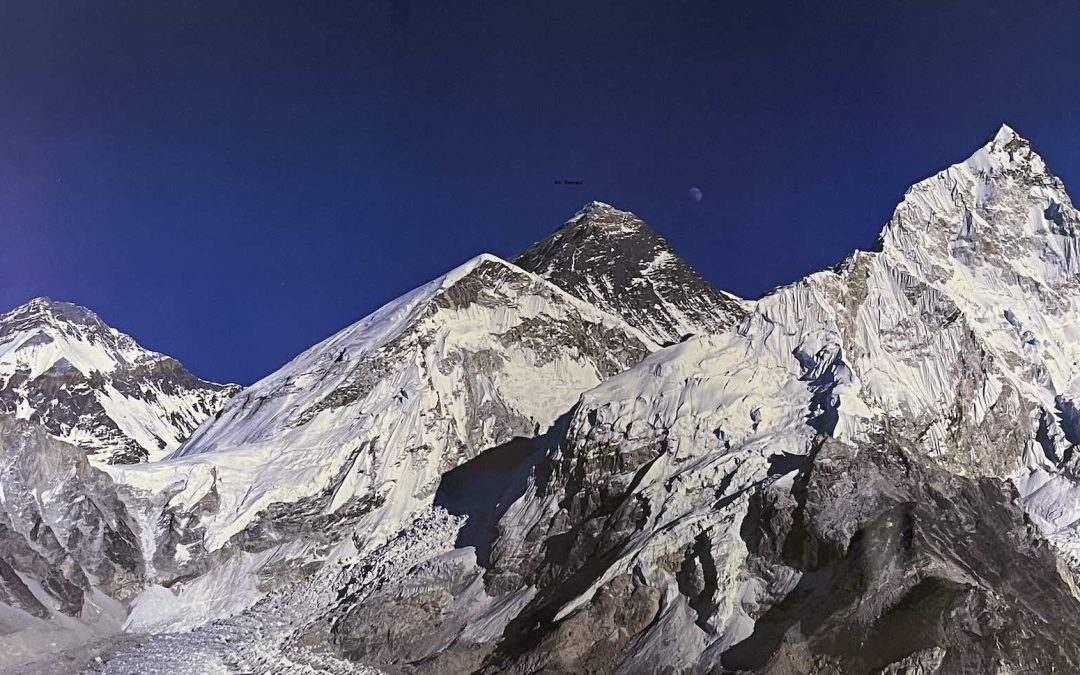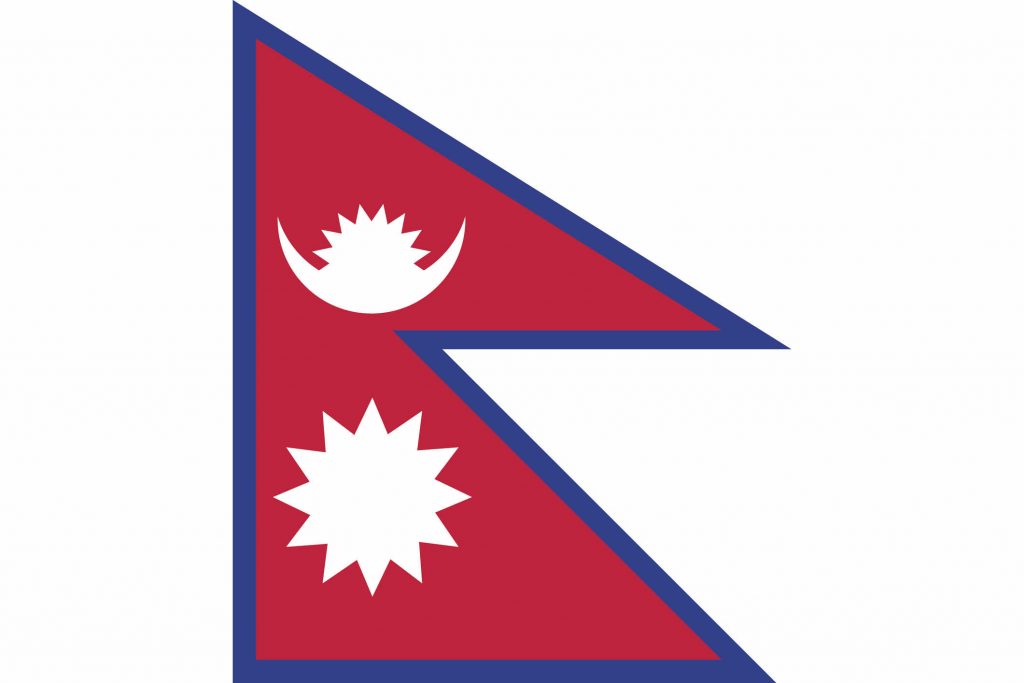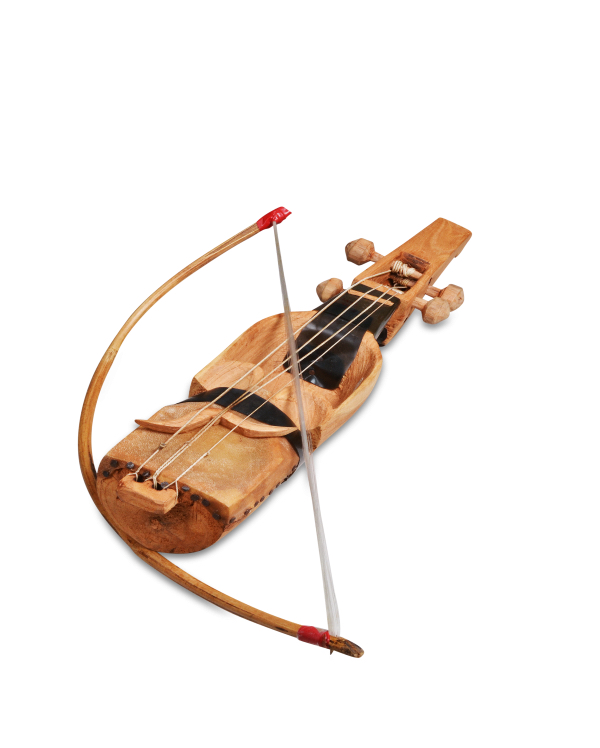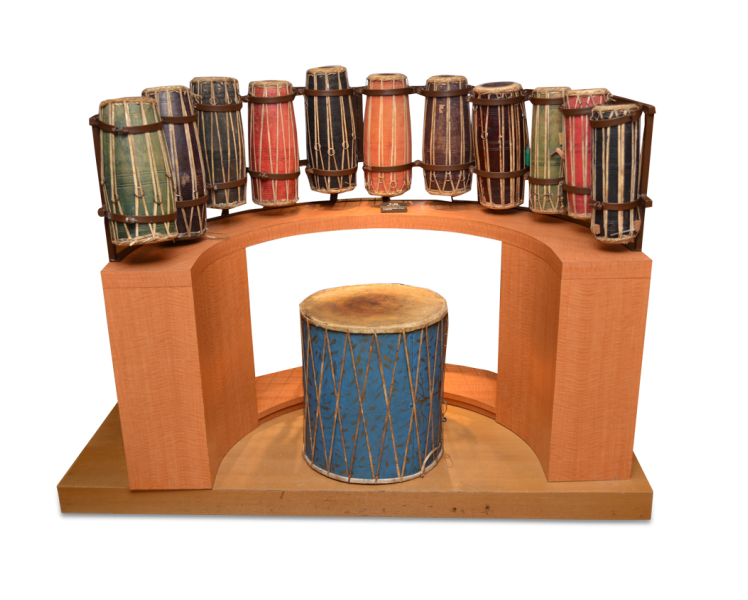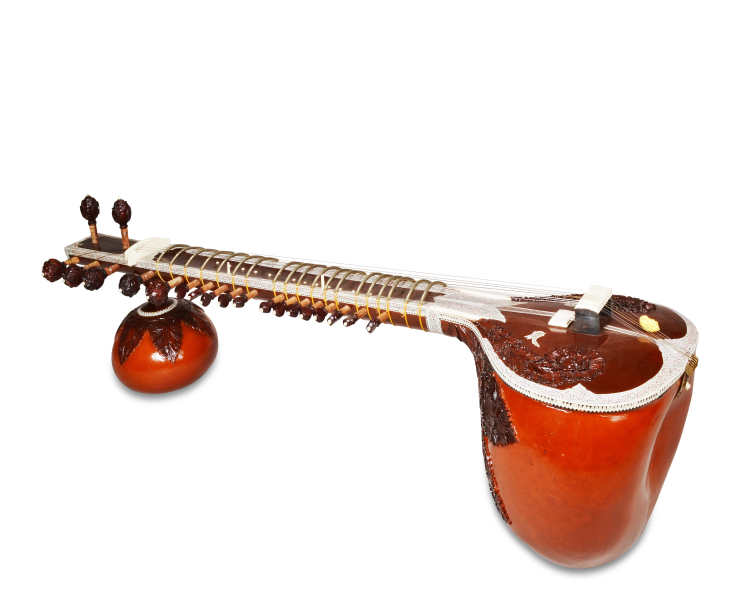Welcome to Min-On’s Music Journey! Today, the Min-On Concert Association and the Embassy of Nepal in Japan welcome you to Nepal, a landlocked country located in South Asia.
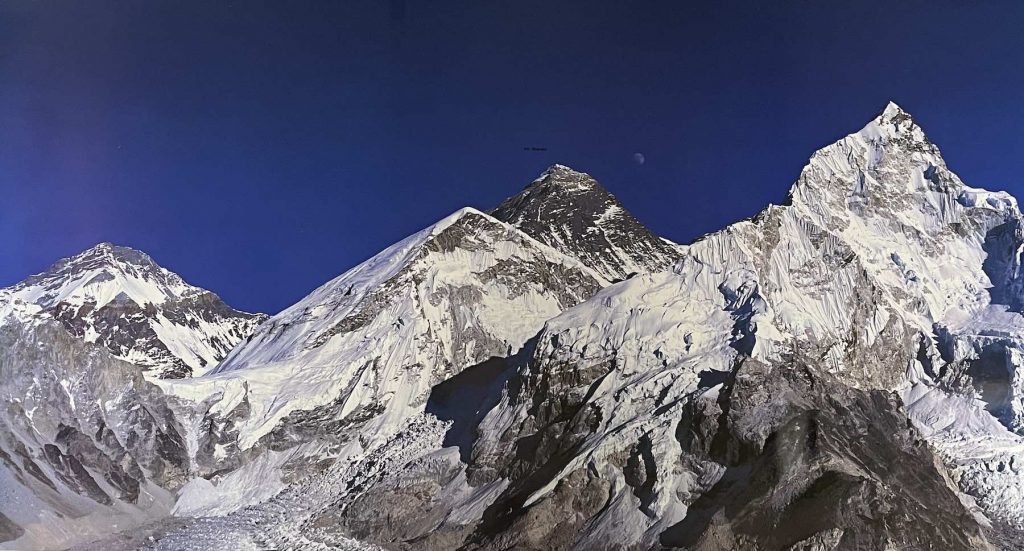
Mount Everest
Northern Nepal is home to many mountains in the Himalaya Mountain Range over 8,000 meters tall, including Mount Everest, the tallest mountain in the world. That said, there is a massive difference between the natural environments of the north and south sides of the country. The center of the country consists of enormous valleys and plains, and a subtropical jungle covers the southern region.
| Travel guide for Nepal:
・See historic cities in the Kathmandu Valley, a World Heritage Site ・Join in on Dashain, the biggest festival in Nepal ・Taste dal bhat tarkari, a staple Nepalese dish |
Kathmandu Valley, a World Heritage Site
Widely known as the birthplace of the Buddha, Nepal is a unique religious area where Buddhism and Hinduism coexist, giving rise to many different cultural traditions. The Kathmandu Valley lies slightly east of the center of the country and is an important World Heritage Site that represents Nepal’s dynamic appeal.
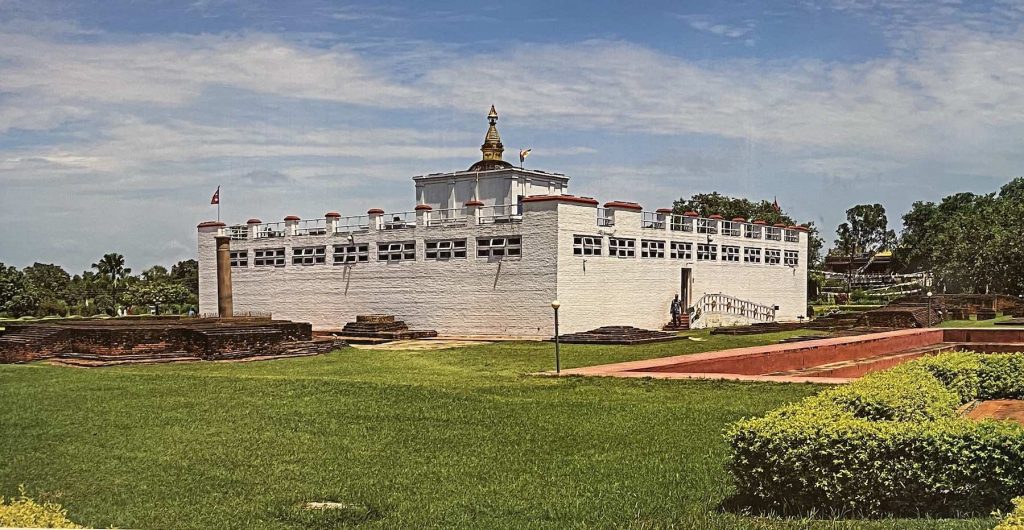
Lumbini, the birthplace of the buddha
The Kathmandu Valley is a lush region with fertile soil that has prospered since antiquity as an important trade crossroads between Tibet and India. By the 15th century, the three ancient cities of Kathmandu, Patan and Bhaktapur were competing in splendor by building palaces, temples and more. As a result, their technological capacity in architecture, carving and artisanship advanced substantially.
Buildings constructed from a mix of wood and red brick, a hallmark of Nepal’s traditional architecture, still line the streets today in each of these major cities. The capital of Kathmandu in particular is a popular sightseeing destination. Travelers come from across the globe to experience nostalgic, old-world cityscapes against the backdrop of Nepal’s unique and interconnected national culture.
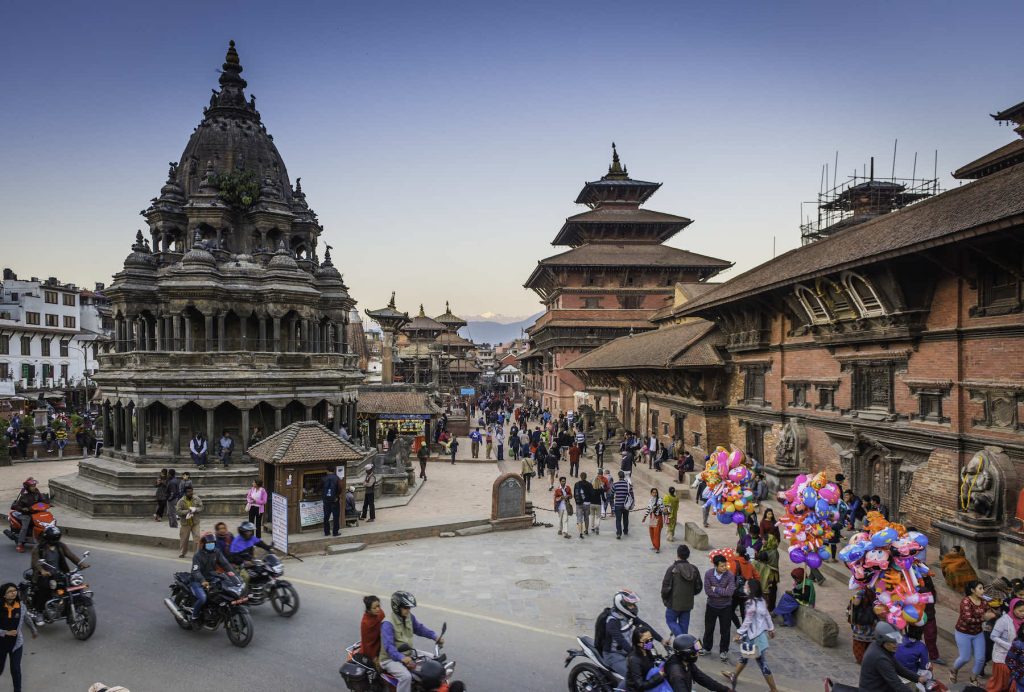
Kathmandu

Patan (left) and Bhaktapur (right)
These three ancient cities and their Buddhist and Hindu architecture are collectively known as the Kathmandu Valley World Heritage Site.

Swayambhunath (left) and Pashupatinath (right)
| The world’s only non-rectangular national flag
The coexistence of Nepal’s two religions is expressed through its national flag, which uniquely consists of two triangular flags stacked vertically. In conception, this design combined the flag of the royal family with that of the prime minister. Today it has come to represent the Himalaya mountain range, a symbol of Nepal, and the country’s two major religions, Buddhism and Hinduism. |
|
Dashain, Nepal’s biggest festival
Due to multiple ethnic groups and two major religions, Nepal has a large number of distinctive festivals. Dashain, which is held in the fall, is the largest. It’s associated with Durga, a strong, beautiful goddess who defeats demons. The festival is held to pray for good health and a bountiful harvest.

Dashain was originally Hindu, but it has now spread among Buddhists, too, becoming a national holiday. The ceremonies take place over ten days, when family members return to their hometowns to spend time together with family.
Dashain is similar to Japanese New Year’s celebrations in many ways – during the festival, Nepalese people go on big shopping trips, embrace leisurely activities like flying kites and visit temples.
A “two meals a day” food culture
A morning in Nepal starts with a cup of cha. Cha can mean tea in many forms across the world, but here, it’s black tea, milk and sugar flavored with a blend of spices. This drink is an essential accompaniment to every Nepalese meal.
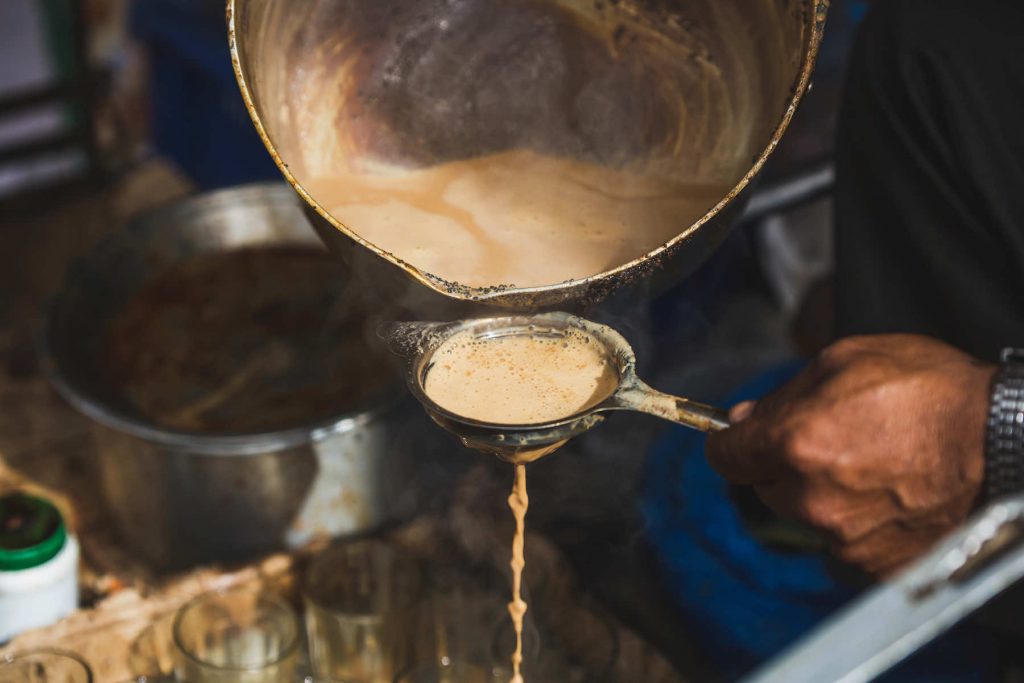
In Nepal it’s common to eat two meals a day, and a snack called khaja. The first meal of the day is eaten late in the morning. One of the most common offerings is dal bhat tarkari, a quintessential Nepalese meal. “Dal,” “bhat” and “tarkari” are the words for “beans,” “rice” and “side dish,” respectively. These components make a well-balanced meal. Dal often refers to a soup made with chickpeas, but at restaurants it might also include chicken or mutton curry.
This meal is followed by khaja snacks like momos (steamed dumplings) or bara (bean pancakes). Then, dal bhat tarkari is served again for dinner. The dinner tarkari uses different ingredients than the morning version. A defining feature of this dish is that each family has their own variation, which includes adding different curries or side dishes.

The Nepalese people’s connection to music
Music is close to the hearts of the Nepalese people; it plays a large role as the soundtrack of their lives. From morning until night, it’s common to hear people humming romantic songs or dance-able hit songs throughout the country. It’s also quite common for bus drivers and train conductors to play their favorite music inside buses and trains cars.
The national symbol of Nepal’s musical culture is a conch shell instrument called a shanka. It’s believed every household in Nepal has one. The shanka is also a ritual implement used in religious ceremonies, and most Nepalese know it from a very young age.
| Other traditional Nepalese instruments | ||
| Sarangi |
|
A classic Nepalese string instrument played with a bow. It consists of four strings stretched over a hollow wooden body. |
| Madal |
|
A two-sided hand drum with a cylindrical or barrel-shaped body with hides stretched over both ends. A paste called molud is applied to the surface of the drum to adjust the pitch of the sound. |
| Sitar |
|
A musical instrument with origins in northern India and Nepal. About 7 of the roughly 20 strings are plucked to create the sound, and the surrounding strings resonate to amplify that sound. Using vibrato allows a sitar player to express complex tone and timbre. |
Below, please see two pieces from the Min-On Global Session for Peace concert held in 2016 that showcase the expressiveness of the sitar.
- Connection
- Himalayan winds
H.E. Dr. Durga Bahadur SUBEDI, Ambassador of the Embassy of Nepal in Japan, will introduce you to “The Development of Music of Nepal.”
|
The Development of Music of Nepal
H.E. Dr. Durga Bahadur SUBEDI
Nepalese music was germinated and developed at the beginning of the seventeenth century or probably even before. Nepalese music has been a people’s music, music nurtured by the people through the ages. We can see the spectrum of beautiful and vibrant musical rainbow in every place in Nepal. The different ruling dynasties patronized and promoted Nepalese music. With more than ninety ethnicities, the music of Nepal is highly diverse. The poly-ethnic characteristics of Nepalese society have always promoted the folk music of Nepal. The wide-ranging ethnic and cultural diversities contributed to the development of folk music in Nepal. In fact, the diverse and vibrant cultures, traditions, religions, and festivals are often reflected in the folk music of Nepal. The folk songs of the country also reflected various and vibrant societies, tribes and traditions of Nepal, and also enshrined the Social, ritual, rural and agricultural lives of the Nepalese people. The folk songs of Nepal consist of Asare, Jhyaure, Dohori, Juhari, Deuda, Sorathi, Ghatu, Chhyali. The modern era of Nepalese music began with the advent of democracy in the country in 1951. The country was able to open its first radio station, Radio Nepal, in 1951. The Radio Nepal contributed to the rise of many key and important figures in the field of music such as Nati Kaji, Ambar Gurung, Shiva Shanker, Bachchu Kailash, Narayan Gopal, Prem Dhoj Pradhan, Pushpa Nepali, Yogesh Vaidya, Gopal Yonjan, Fatte Man Rajbhandari, Koili Devi, Tara Devi, Aruna Lama, Meera Rana, Gyanu Rana, Dharma Raj Thapa, Kumar Basnet, Bhakta Raj Acharya, Arun Thapa, Deep Shrestha, Deepak Kharel, Om Bikram Bista, Shambhu Jeet Baskota, Prakash Shrestha, Madhu Chhetri, Karna Das, Ananda Karki, Udit Narayan Jha, Ram Krishna Dhakal, Yam Baral, Promod Kharal, Sugam pokharal, Raju Lama, Shiva Pariyar, Deepak Limbu, Deepak Bajracharya, Nabin K. Bhattarai, Hemanta Sharma, Nima Rumba, Shambhu Rai, Udaya Sotang, Rajesh Payal Rai, Anju Panta, Ani Chhoying Dolma, Milan Newar, Melina Rai, Situ Kharel, Kunti Moktan, Manila Sotang, Indira Joshi, Prabisha Adhikari and many more.The rise of these finest music composers, singers and lyricists not only manifested their talents and dedication, but also contributed to the development of modern Nepalese music. With the installation of more powerful transmitters in 1954, the Radio Nepal could reach to the many parts and districts of Nepal and even outside of Nepal to Darjeeling, Sikkim, Assam, Dehradun, Bhutan and Burma (Myanmar). It can therefore be said that the development of modern songs took a significant and solid course after the dawn of democracy in 1951. The establishment of Nepal Academy in 1957, Rashtriya Nach Ghar (National Cultural Corporation) in 1961 and Ratna Recording Cooperation in 1962, Nepal Film Corporation in 1971 and Nepal Television in 1984 enormously contributed to modernize and institutionalize Nepalese music. The opening of music degree course in the Tribhuvan University also enabled and enhanced the development of Nepalese music. It is interesting to note that all these institutions including Radio Nepal were established, funded and run by the Government of Nepal. The development of Nepalese film industry also helped promote Nepalese music. In fact, films have been a major source of supporting the music of the country. The Nepalese film industry offered employment, prestige and popularity to several musicians and singers of the country. In conclusion, we can say that Nepalese music has been rooted in the soil of Nepal. The Nepalese music has traversed a long way and withstood the test of time. The Nepalese music has been able to enshrine multifaceted characterizes and structure of the society with the inclusion of ethnic, religious, cultural and philosophical perspectives. The Nepalese music is, however, facing severe and several challenges with heaving influence of western and subcontinental music. The old general demonstrates their resistance to the influence and intervention of western music on Nepalese music, but the new generation welcomes the western music and instruments to the Nepalese music. The need of the time is to find and maintain a balance between the nationalism and westernization. there is also a need of maintaining a balance between the polyphony and diversity of the Nepalese society, particularly of the Nepalese music. |
In closing, we would like to introduce the most popular songs and music videos in Nepal recommended by the Ambassador of the Embassy of Nepal in Japan.
- Yo Nepali Shir Uchali -Prem Dhoj Pradhan
- Adhar -Ram Krisnha Dhakal
- Basanta Nai Basna Khojchha (Maitighar)-Asha Bhosle
- Pohor Sal Khushi Fatda -Aruna Lama
- Lek Fulyo Lali Gurans -Kumar Basnet
- Ritu Haruma Timi -Arun Thapa
- Churale Nai Ghochna Thalyo -Rajesh Payal Rai
- Ful Butte Sari -Milan Newar
- Yi Aakhama Timi Chhou -Melina Rai
- Lagchha Man Heri Rahu -Ananda Karki
- Mero Euta Sathi Chha -Sugam Pokharel
- Yasto Pani Hudo Rahechha – Fatte Man Rajbhandari
- Timro Aakha -Situ Kharel
- Nisthurile Chhadera Gai Hali -Yam Baral
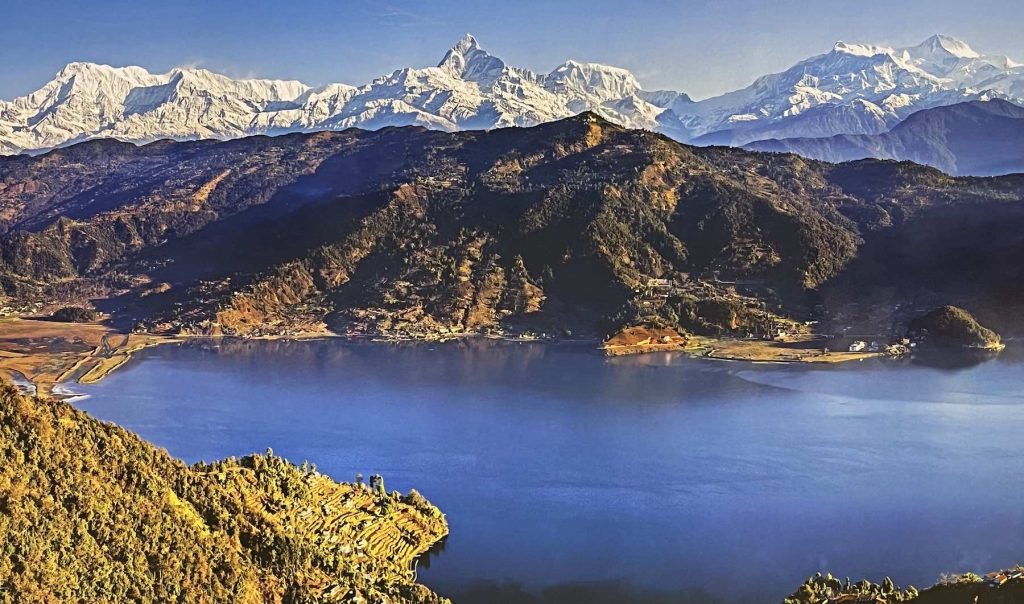
Fewa Lake
What did you think of your music journey to Nepal? There are still many more places to go! Please look forward to our next destination.
(Produced in collaboration with the Embassy of Nepal in Japan, who also provided photos.)
Min-On Concert Association
-Music Binds Our Hearts-


